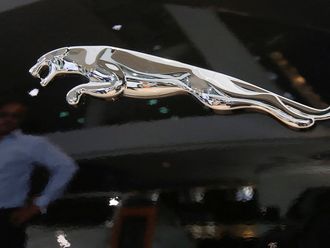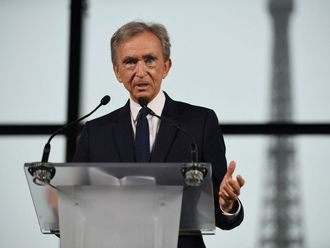Dubai: Art is timeless, and so it seems is the investment that it attracts. Connoisseurs of fine art have not let a recession get in the way of going for the best buys available.
"Trend investments like cash and property don't pay as much, so people are looking at other ways to invest and also enjoy these investments in art, vintage cars, jewellery and watches," said Matthew Girling, CEO of Bonhams Europe and Middle East.
"Recently we have witnessed very low interest rates across Europe and America which resulted in the wealthy people looking at other areas to put their money. As inflation creeps up, some art-related purchases are outstripping money invested in institutions."
In the UAE, the presence of two international auction houses — Christie's and Bonhams coming up to their fourth and third years respectively — the auction market continues to attract high-profile interest. As inflationary prices drop and traditional forms of investment don't offer the high returns of previous years, the contemporary art market has stepped in to offer investors manifold options.
Global spend
According to Michael Jeha, managing director of Christie's ME, its global spend has increased over 400 per cent since 2005 with the Middle East accounting for the highest number of new registrants in its 2009 global sales. The region has had a long history of collecting art, and it was especially the case in Iran, Iraq, Lebanon and Egypt.
With the direct presence of Christie's and Bonhams, there is evidence that the Gulf countries are fast catching up in terms of the quality and scale of its growing collection. "We see very strong participation from clients in the UAE, both locals and expats, as well as from clients around the Middle East," said Michael Jeha, managing director of Christie's ME.
"We are also seeing increasing international participation in the Dubai sales, with approximately 30 per cent of the works in these now being bought by collectors in Europe, the US and elsewhere. This is very important as it shows demand for Middle Eastern art is internationalising and the depth of buyers increasing."
The UAE currently has over 60 art galleries compared to fewer than ten just five years ago. There has also been an increase in art fairs and museum projects in Abu Dhabi and Doha.
While auction houses have felt the build-up towards their offerings over the last 18 months, they are looking forward to a further pick-up going forward. "Art is a tangible asset that is viewed as a good store of value," Jeha said.
"The art market has attracted a lot of interest over the last 18 months as the global financial uncertainty has seen investors look for alternative areas to put their capital." Until recently, regional collectors have shown a preference in art work coming from Iran, Iraq and Egypt. Indian and Pakistani art is also getting patrons from major institutions as well as international collectors.
"We do see patriotic buying trends and most Middle Eastern collections will be pan-Arab with perhaps a greater number of works from a particular country," Girling said.
"There is a Saudi collector who has a tremendous Iraqi collection, but what's become more interesting recently is that there are more collectors interested in Arab work. At the last auction, an Indian collector was aggressively bidding on an Egyptian work."
Action needed
There is also strong interest in classical Islamic art, contemporary art from the West, jewellery and watches. While the art market in the region is still in its formative phase, it is growing fast as local art infrastructure and interest builds up.
"The market can only continue to grow and flourish," said Matthew Girling of Bonhams Europe and Middle East. "However, institutional support and an art infrastructure such as art schools and publications, art critics, curators, professional shippers, etc., are required to sustain it.
"There needs to be more galleries and more art fairs. We are just part of a tapestry that is the art market. This region is about 250 years behind London, 30 years behind Hong Kong and 60 years behind New York."












